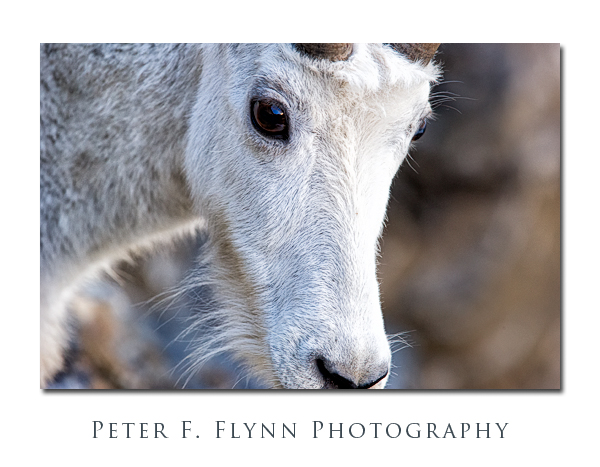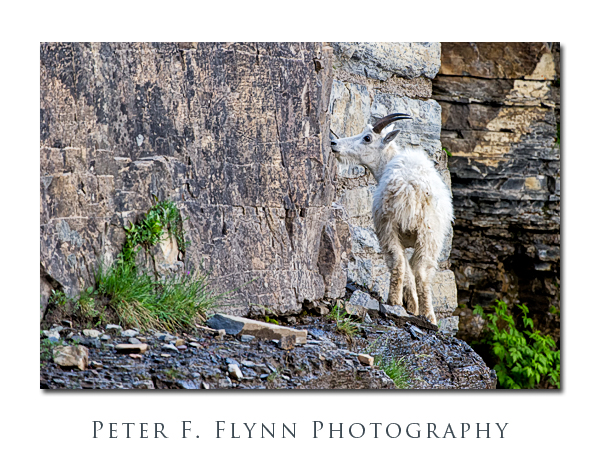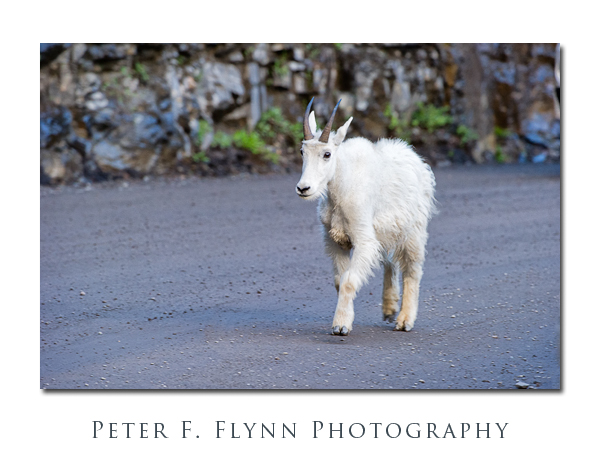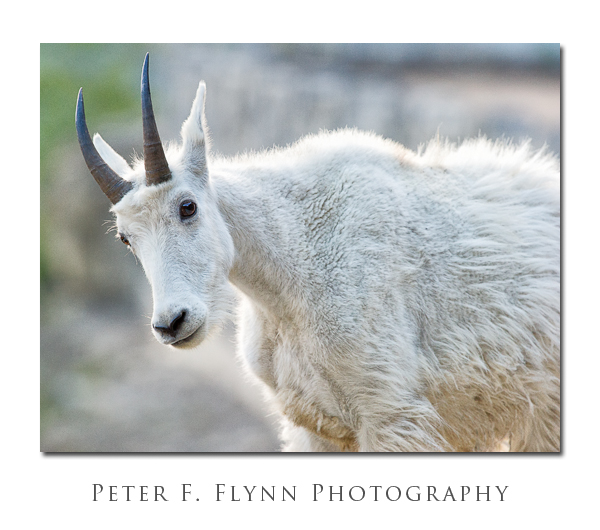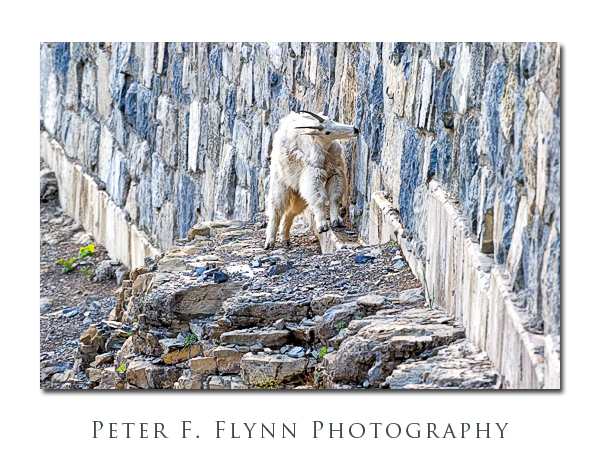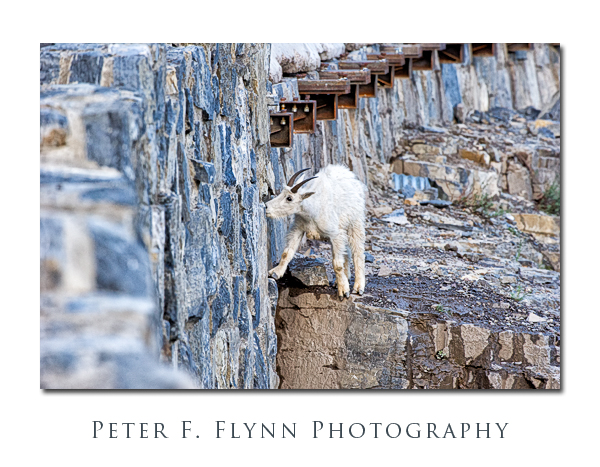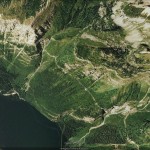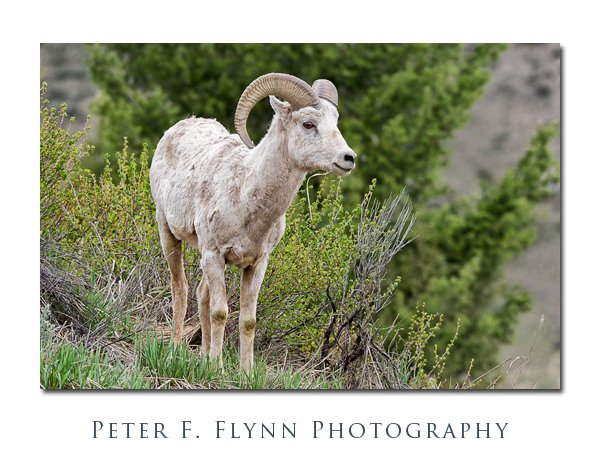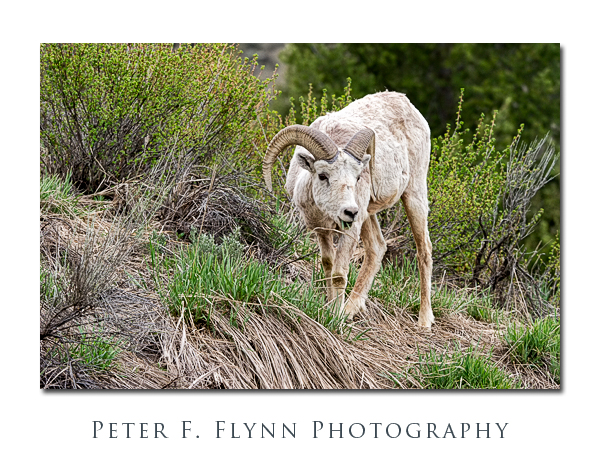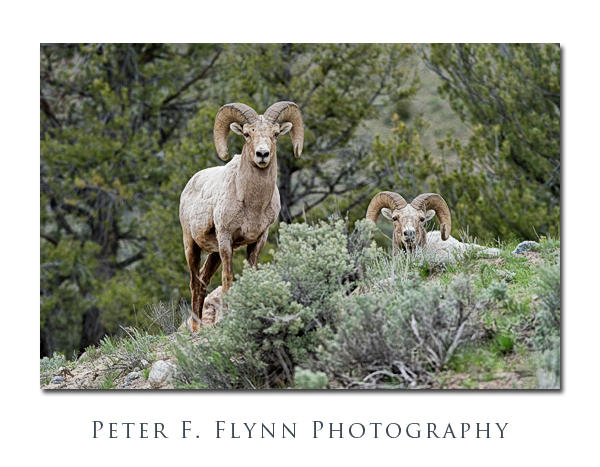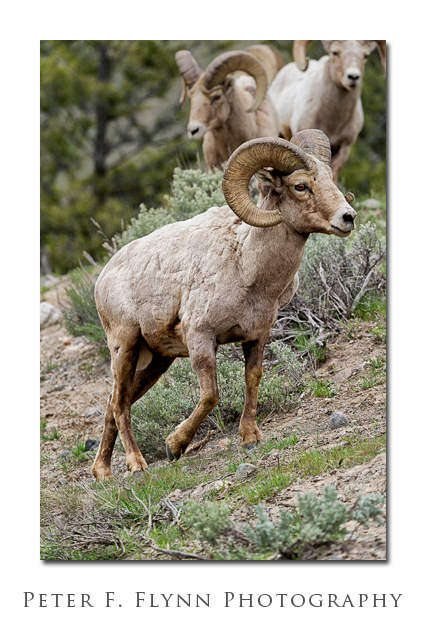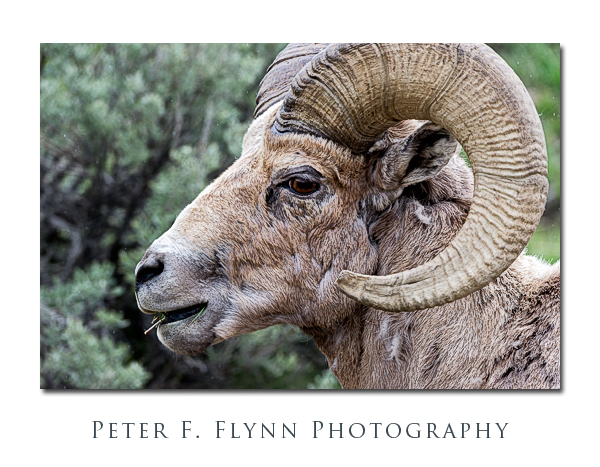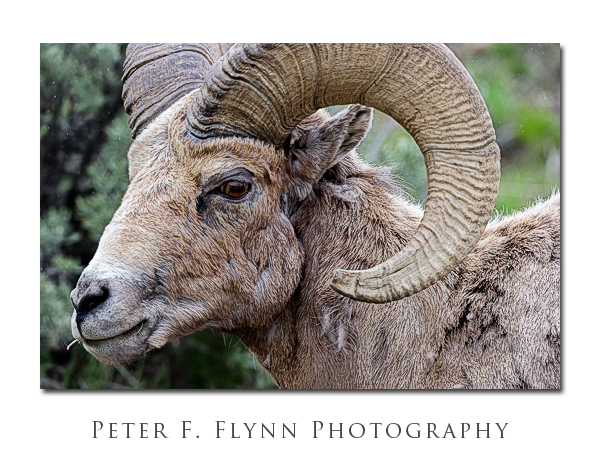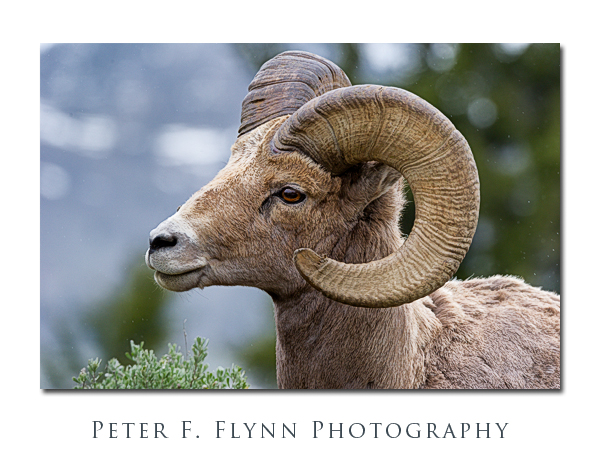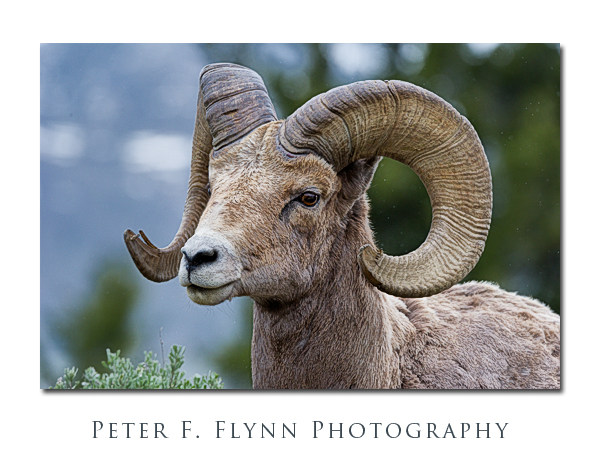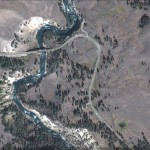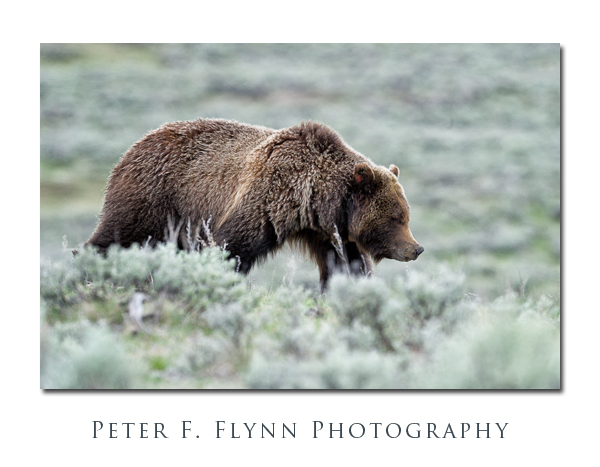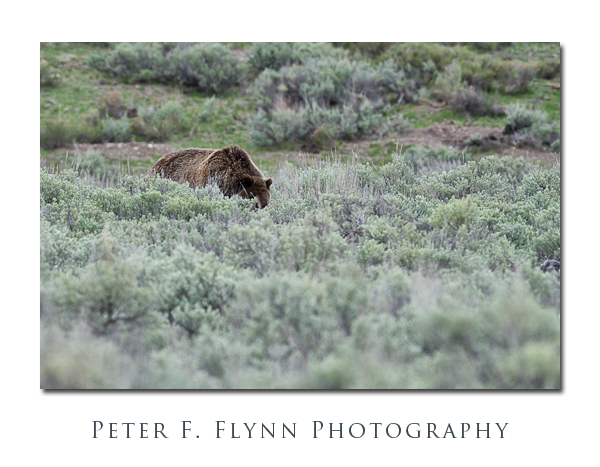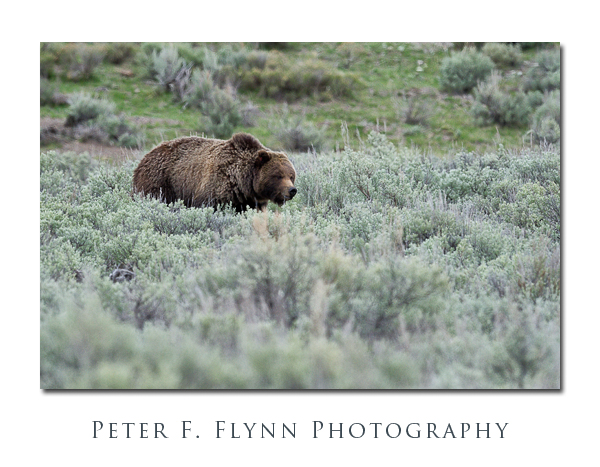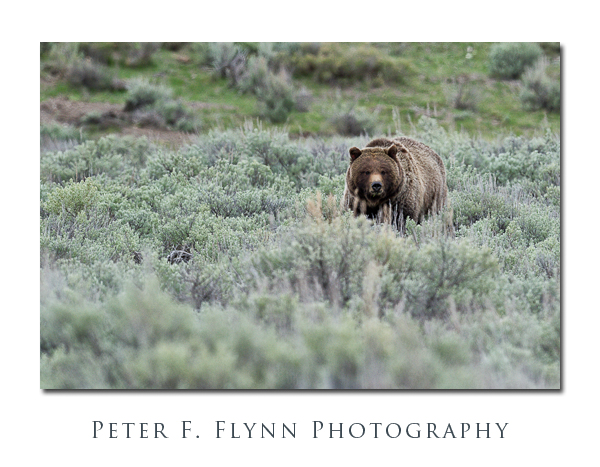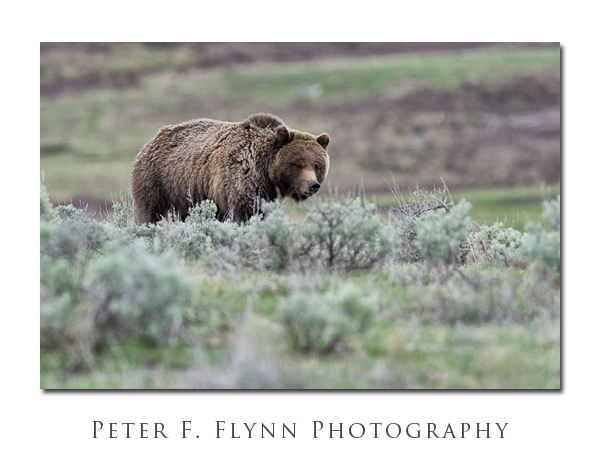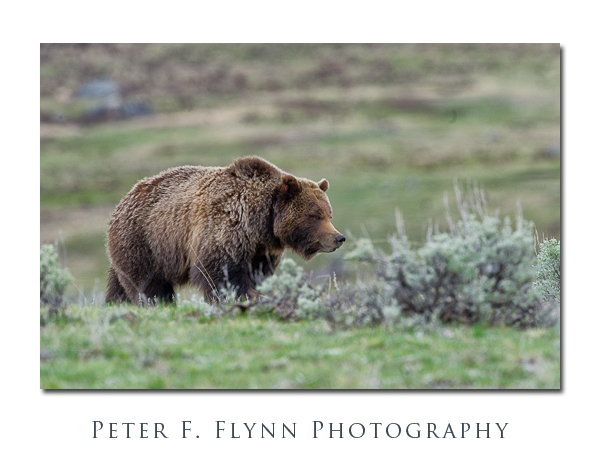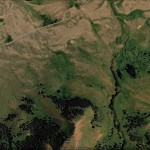We arrived at Glacier National Park late in the afternoon of the July 22, 2011. After checking in to our hotel, we just couldn’t wait, and decided to take a quick run up the Going-to-the-Sun Road (GTSR). It was by then after 20:00 MDT, and so we didn’t really anticipate having any notable photographical opportunities – but of course, you know what I’m going to tell you next.
Right, always be prepared for an opportunity. Especially with wildlife that exhibit crepuscular behavior, you just have to be ready to make the shot should luck be with you.
We encountered this small band of Mountain Goats (Oreamnos americanus) at around 20:40, at a point where the roadway lies on top of locally-quarried stone blocks. The exposed blocks provide the goats with relatively easy access to the rock surfaces, and specifically salts in the rock matrix.
Vegetation is uniformly low in electrolytes, and most vegetarian wildlife seek out supplemental salt. Curiously, the amount of salt sought by goats (and virtually all animals) is much greater than their absolute dietary requirement. The GTSR can be very crowded at times, but by early evening traffic is significantly reduced, providing the goats with a chance to fulfill their nutritional desires/needs in an easily accessed location.
Careful review of the image directly above (and the others to some extent) reveals that the tips of the goat’s horn are blue. A remarkable feature of the stone in this area is that it is one or another shade of a distinctive dusty blue color. I could not determine whether the goats seemed to favor one shade over another, but there is no doubt but that these animals were drawn to the place where the rocks are blue.
The goats didn’t seem to mind us much, and in fact a kid trotted right behind me on the way from one section of the wall to another – right down the middle of the road.
Images in this entry were recorded using the Nikon D3s (what else?!!!) and the AF-S NIKKOR 200-400mm f/4G ED VR II (mostly at 400mm). Exposures were at f/8.0 and 1/125s, ISO 3200. Noise reduction was applied using Nik Software Dfine. Further processing was accomplished using Nik Viveza 2 and Color Efex Pro 4, and Photoshop CS5. Image sharpening was applied using Photokit Sharpener 2.
A Google Earth image of the area appears below:
Copyright 2012 Peter F. Flynn. No usage permitted without prior written consent. All rights reserved.
